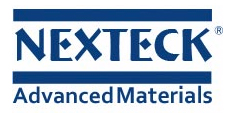Tin is a chemical element with the symbol Sn (Latin: stannum) and atomic number 50. This silvery, malleable poor metal that is not easily oxidized in air and resists corrosion, is found in many alloys and is used to coat other metals to prevent corrosion. Tin is obtained chiefly from the mineral cassiterite, where it occurs as an oxide. It can be alloyed with copper to make bronze. Pewter alloys contain from 85% up to 99% tin.
Tin is a malleable, ductile, highly crystalline, silvery-white metal; when a bar of tin is bent, a strange crackling sound known as the tin cry can be heard due to the breaking of the crystals. This metal resists corrosion from distilled, sea and soft tap water, but can be attacked by strong acids, alkalis, and by acid salts. Tin acts as a catalyst when oxygen is in solution and helps accelerate chemical attack. Tin forms the dioxide SnO2 when it is heated in the presence of air. SnO2, in turn, is feebly acidic and forms stannate (SnO32) salts with basic oxides. Tin can be highly polished and is used as a protective coat for other metals in order to prevent corrosion or other chemical action. This metal combines directly with chlorine and oxygen and displaces hydrogen from dilute acids. Tin is malleable at ordinary temperatures but is brittle when it is cooled.
| Symbol | Sn | Density (20°C)/gcm-3 | a5.769 |
| Atomic number | 50 | Density (20°C)/gcm-3 | ?7.265 |
| No. of naturally occurring isotopes | 10 | Melting point /°C | 232 |
| Atomic weight | 118.69(+/-3) | Boiling point /°C | 2623 |
| Electronic configuration | [Kr]4d'° | ΔHfus/kJmol-1 | 7.07 |
| rIV (covalent)/pm | 140.5 | ΔHvap/kJmol-1 | 296 |
| rIV (ionic, 6-coordinate)/pm | 69 | ΔHf(monoatomic gas)/kJmol-1 | 300.7 |
| rIV (ionic, 6-coordinate)/pm | 118 | Ionization energy/kJmol-1 I | 708.4 |
| Electronegativity χ | 1.8 | Ionization energy/kJmol-1 II | 1411.4 |
| Electrical resistivity (20°C)/μohm cm | ?llx 10-6 | Ionization energy/kJmol-1 III | 2942.2 |
| Band gap Eg/kJ mol-1 | α7.7, ?0 | Ionization energy/kJmol-1 IV | 3929.3 |
| Temperature (oC) @Vap. Pressure | Techniques | Remarks | |||||
| 10-8 Torr | 10-6 Torr | 10-4 Torr | Electron Beam | Crucible | Coil | Boat | |
| 682 | 807 | 997 | Excellent | Al2O3 | Tungsten | Molybdenum | Wets Molybdenum; use Ta liner in EB guns |
| Sn | |||||
| Precision Alloys | |||||
| Alloy | Din Symbol | Electrical Resistivity at 20°C | Conductivity | Density | |
| μΩ/Cm | S/W | g/cm3 | |||
| NEXZERAN? | CuMn7Sn | 29.00 | 3.45 | 8.50 | |
| Sputtering Targets | |||||
| Matierial | Symbol | Atomic Number | Thermal Conductivity | Theoretical Density | |
| W/m.K | g/cc | ||||
| Tin_Sn | Sn | 50 | 66.6 | 7.3 | |
| ITO | In2O3/SnO2 90/10 wt% | - | - | - | |
| Evaporation Materials | |||||
| Matierial | Symbol | Atomic Number | Thermal Conductivity | Theoretical Density | |
| W/m.K | g/cc | ||||
| Sn ( pellets ) | Sn | 50 | 66.6 | 7.3 | |
| ITO ( pieces ) | In2O3/SnO2 90/10 wt% | - | - | - | |
Below is the periodic table of chemical elements.The elements in red are the ones Nexteck's product contain. Click them, you will come to the details.

NEXTECK (CHINA) - SHENZHEN
Tower A1001, Galaxy Century, No 3069, CaiTian Rd, Futian District, Shenzhen, China
Zip Code: 518026
Tel: +86-755-8256-1631
Fax:+86-755-8256-1691
E-mail:nexteck@nexteck.com
PRODUCTION PLANT
Wenchuan Rd, Alley 5300/1, Baoshan District, Shanghai, China
Zip Code: 200942
Tel: +86-21-3638-0189
Fax: +86-21-3638-0109
E-mail: nexteck@nexteck.com.cn